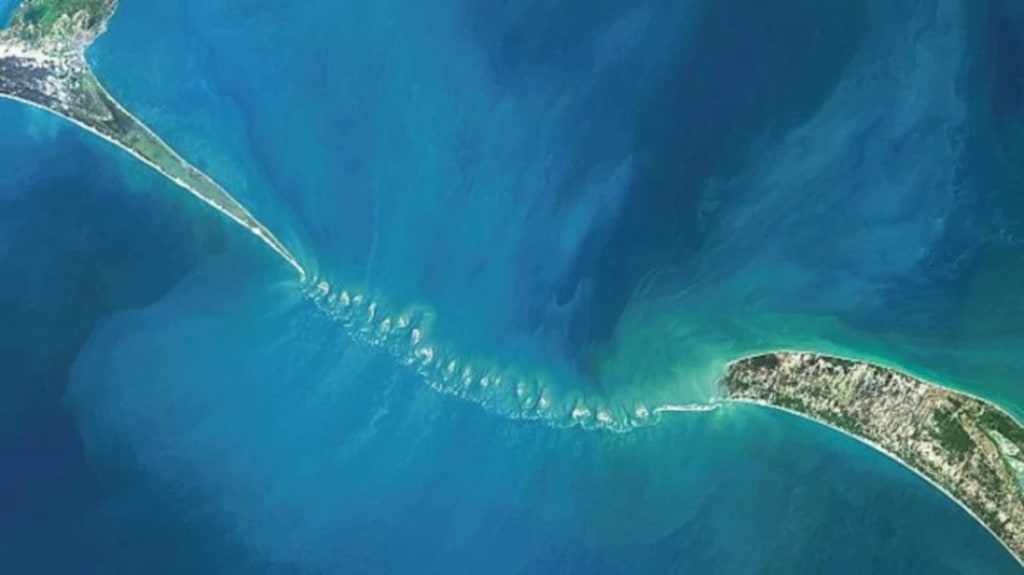Ram Setu: Unraveling the Mystery of the Mythical Bridge
Man-Made Marvel or Geological Wonder? Exploring the Enigma of Ram Setu

In the annals of human history, certain enigmatic structures and phenomena have captured our collective imagination, sparking debates that transcend generations. One such marvel is the "Ram Setu," also known as Adam's Bridge, a chain of limestone shoals that stretches between Pamban Island in India and Mannar Island in Sri Lanka. The question that continues to perplex scholars, scientists, and believers is whether Ram Setu is a man-made bridge, as suggested in Hindu mythology, or a natural geological formation. In this article, we embark on a journey through history, science, and legend to explore the mystery of Ram Setu.
The Mythological Connection
The Ramayana, one of India's ancient epic poems, narrates the tale of Lord Rama's quest to rescue his beloved wife, Sita, from the demon king Ravana. The poem describes the construction of a bridge, known as Setu Bandhanam or Ram Setu, with the help of Lord Rama's army of Vanaras (monkey warriors) to cross the sea and reach Lanka (modern-day Sri Lanka). This bridge was believed to have been built by Lord Rama and his followers to facilitate their epic journey.
The Geological Perspective
From a geological standpoint, Ram Setu's formation can be attributed to the natural processes of sedimentation, erosion, and tectonic activity. Scientists assert that the limestone shoals are a result of the accumulation of sand, silt, and other sedimentary materials over thousands of years. The phenomenon is akin to the formation of sandbanks, barrier islands, or tombolos found in various parts of the world.
According to scientific analysis, the shallow waters between India and Sri Lanka have witnessed gradual changes in sea level, fluctuations in landmasses, and the deposition of sedimentary material. Over time, these processes led to the formation of the chain of limestone shoals that we now know as Ram Setu.
Carbon Dating and Geological Studies
Researchers have conducted carbon dating and geological studies on the material comprising Ram Setu to estimate its age. The results have suggested that the formation could be thousands of years old, which aligns with the timeline of the Ramayana. However, this correlation doesn't conclusively prove whether the bridge is man-made or a natural occurrence.
The Human Element: Ancient Engineering or Divine Intervention?
One of the key arguments in favor of the man-made theory is the alignment of the limestone shoals. Proponents of this view argue that the straight-line alignment of the rocks is an engineering feat that wouldn't occur naturally. They contend that the structure is too perfect and extensive to be merely the result of geological processes.
Additionally, the Ramayana describes the use of large stones and trees by Lord Rama and his army to build the bridge. Some proponents of the man-made theory argue that underwater archaeological excavations and studies could reveal evidence of ancient construction techniques.
Scientific Skepticism and Counterarguments
Critics of the man-made bridge theory maintain that the alignment of the limestone shoals can be attributed to the underlying tectonic activity in the region. They argue that geological forces have caused the rocks to align in a manner that appears man-made but can be explained by natural phenomena.
Furthermore, they emphasize the absence of physical evidence, such as submerged ruins or remnants of ancient construction materials, to substantiate the claim of human intervention. Skeptics contend that extraordinary claims require extraordinary evidence, and until conclusive proof is presented, the natural geological explanation holds sway.
Cultural and Religious Significance
The debate surrounding Ram Setu extends beyond the realms of science and archaeology; it is deeply entwined with cultural and religious sentiments. For millions of Hindus, Ram Setu is not merely a geological formation but a sacred bridge built by Lord Rama himself. It holds immense religious significance and is considered a symbol of devotion and faith.
The Environmental Impact
In recent years, discussions about the environmental impact of various proposed projects near Ram Setu have brought the issue to the forefront. Plans for shipping canals, dredging, and infrastructure development have raised concerns about potential harm to the geological formation and the surrounding ecosystem.
Conclusion: The Enigma Persists
The question of whether Ram Setu is a man-made bridge or a natural geological formation continues to be a subject of fascination, debate, and reverence. It is a testament to the enduring allure of ancient legends, the complexities of geological processes, and the intersection of science, faith, and culture.
As science advances and technology allows for more extensive underwater exploration and archaeological research, we may eventually unravel the mysteries surrounding Ram Setu. Until then, it remains a symbol of human curiosity, devotion, and the enduring enigma of our world's natural wonders. Whether seen as a bridge of divine origin or a geological marvel, Ram Setu serves as a reminder of the rich tapestry of beliefs and the ever-evolving quest for knowledge that defines our human journey.
About the Creator
Harika Vaddi
Exploring various topics through writing.





Comments
There are no comments for this story
Be the first to respond and start the conversation.